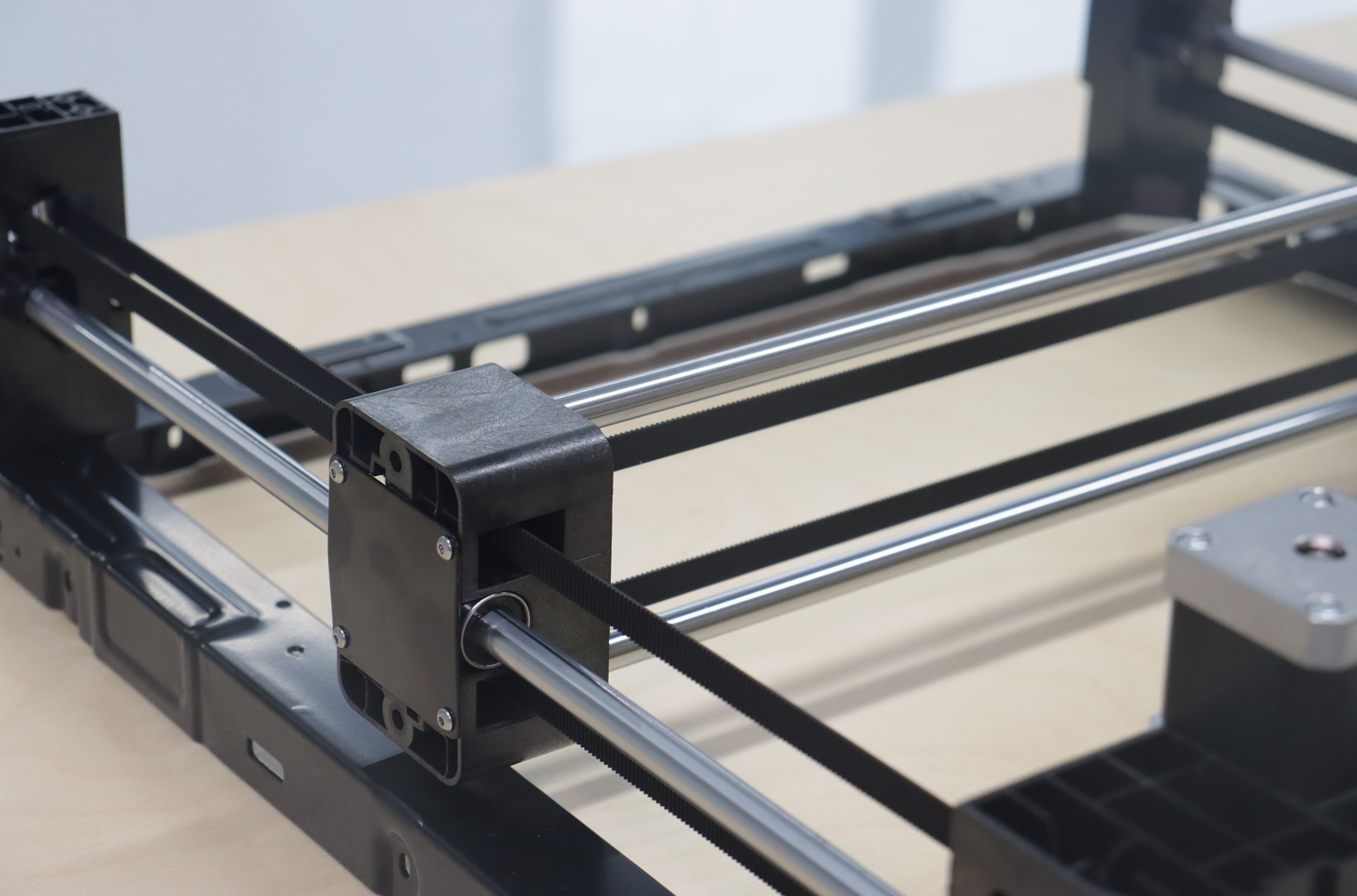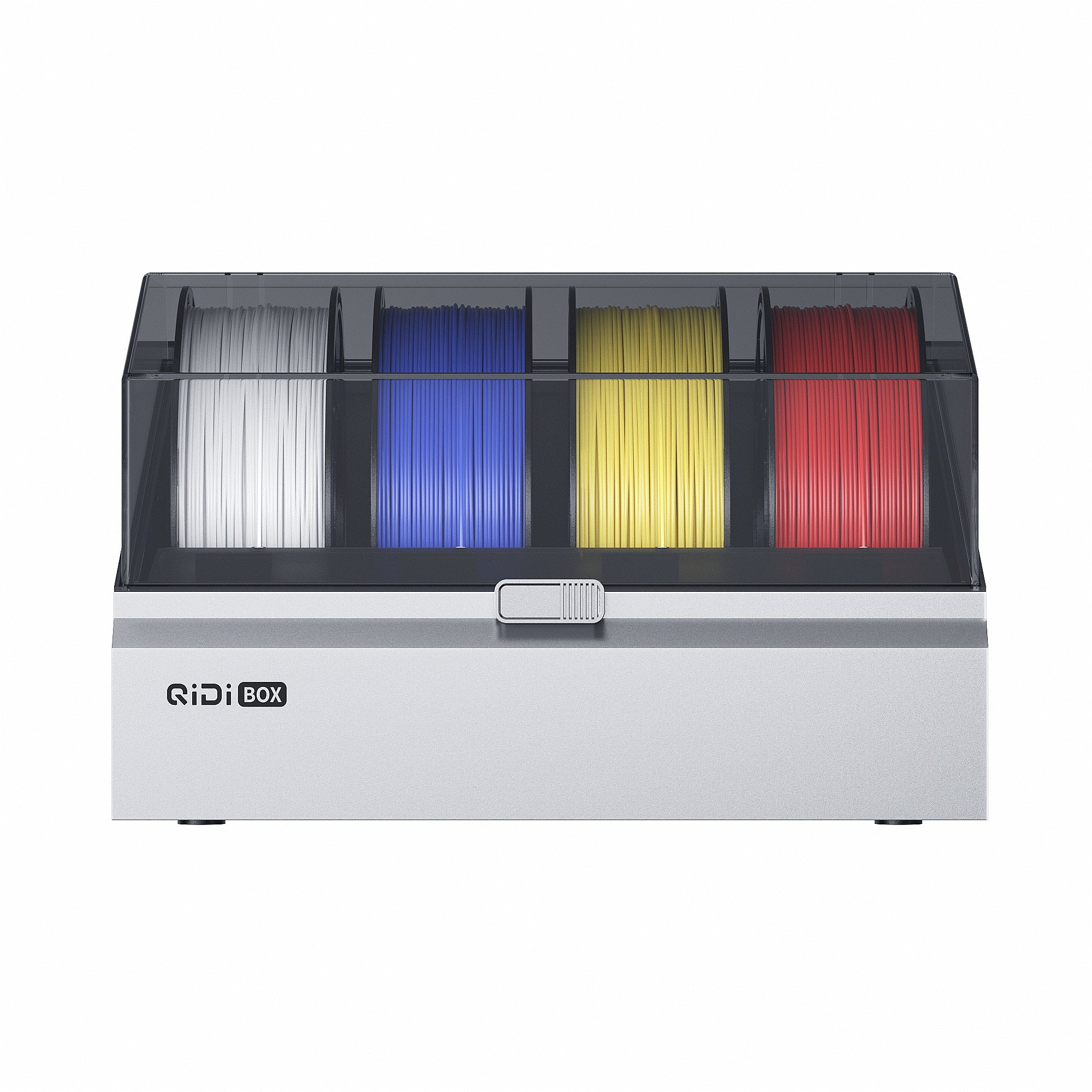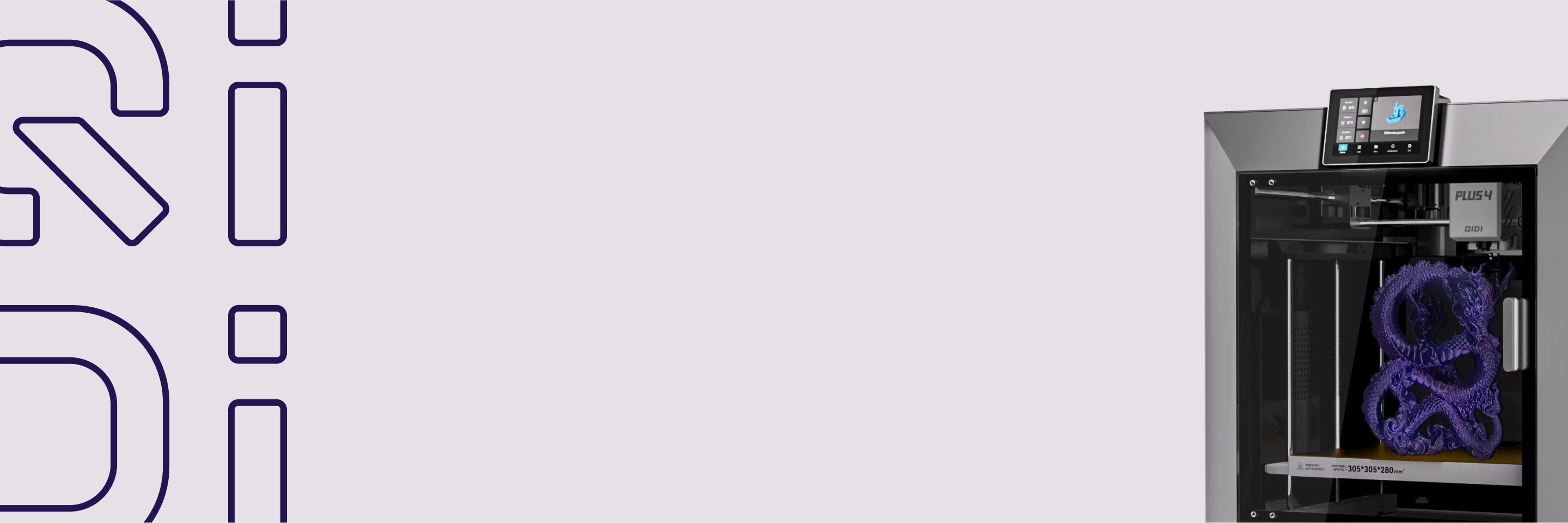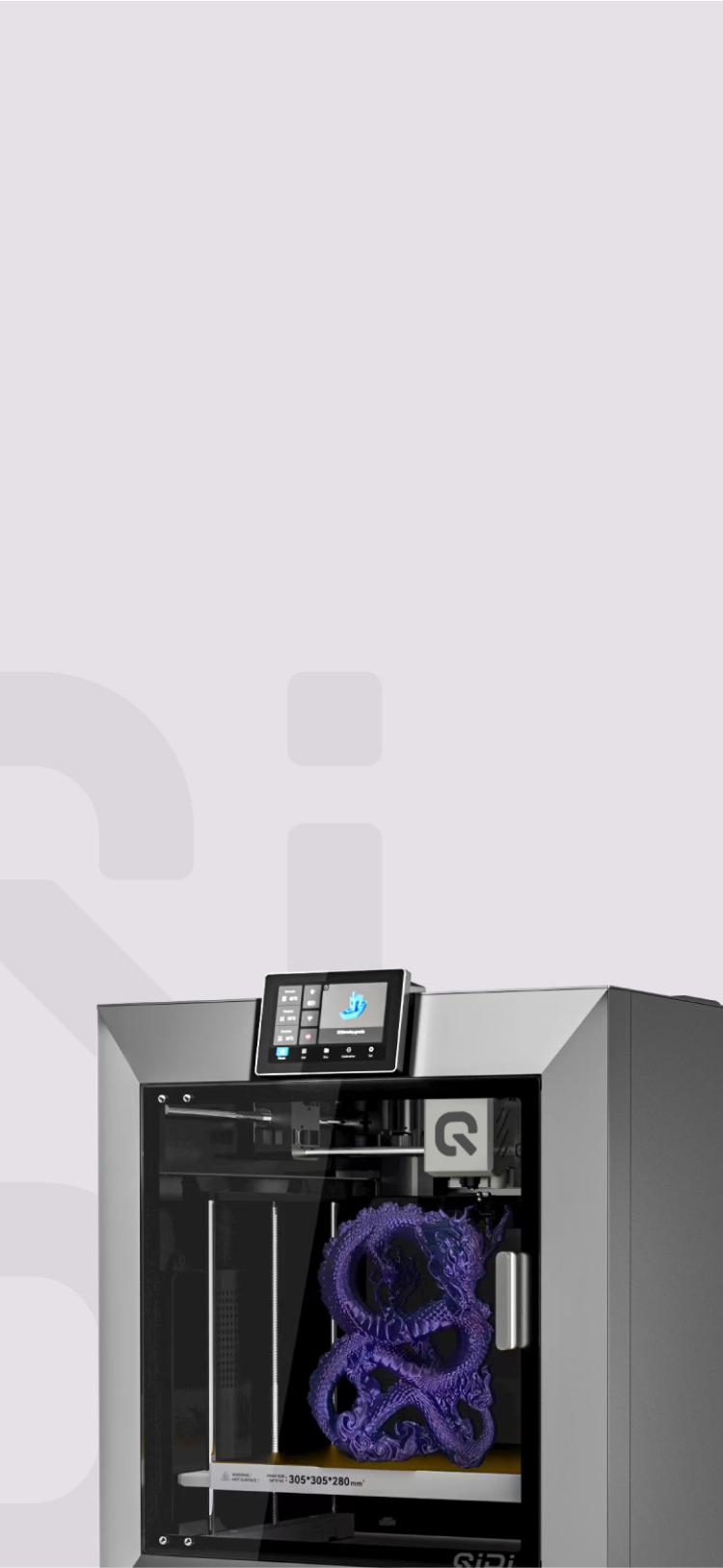CoreXY 3D Printers: How They Work and Why They're Popular


3D printing technology is still evolving, and CoreXY printers are becoming increasingly popular among enthusiasts. They are not your run-of-the-mill 3D printers—they utilize a clever motion system that is different from the standard Cartesian ones. The magic of CoreXY printers lies in their belt configuration, which moves the print head in a completely different way. In case you're curious about why these printers yield better results or why so many people are switching to them, this article discusses how they work and what's so special about them.
What is a CoreXY 3D Printer?
CoreXY is a specific design style for 3D printers that uses a unique belt system to move the print head. Compared to typical Cartesian printers with a motor per axis, CoreXY printers use two stationary motors working together to manage X and Y axes. This difference in design provides a mechanical benefit that affects print speed and quality.
The most significant difference between CoreXY and Cartesian systems lies in how they handle motion. In Cartesian printers, motors physically move along with at least one of the axes, adding weight and limiting performance. CoreXY printers both have motors mounted to the frame in a permanent fashion and handle motion transfer through belts to translate the print head. This seemingly minor design philosophy change creates varying performance that we'll cover in subsequent sections.

How CoreXY 3D Printers Work: The Mechanics Explained
CoreXY's design is far from the conventional 3D printer mechanics. The system derives its performance from four primary parts that collaborate to achieve precise, rapid movement with minimal vibration.
Fixed Motors: The Stationary Power Source
CoreXY printers use two stepper motors to control all the horizontal motion of the print head. Unlike in conventional printers where motors need to travel with the axes, CoreXY motors are fixed to the printer frame—typically installed at the back corners or behind the device. This non-movability is the crux of the CoreXY advantage: the weight of the motors never affects the motion of the print head, allowing increased speed with lower vibration.
All the motors connect with the system through a toothed pulley which keeps the timing belts clutched tight. These motors receive controlled pulses of electricity from the printer control board, and through this, movement of only 0.01mm or less is possible.
H-Shaped Belt System: The Force Transfer Mechanism
The belt configuration of CoreXY printers is a gorgeous piece of engineering. Two linear timing belts—most often fiberglass-reinforced rubber with evenly spaced teeth—run through a set of pulleys in a pattern that, viewed from the top, resembles an "H" or "square infinity" sign.
Each belt follows a carefully planned path:
- From one motor pulley to an idler pulley on the opposite corner
- Across to the print head carriage, where it attaches or runs through
- Around another set of idler pulleys
- Back to the second motor
The belt paths cross but never touch, so it is a system in which tension from the two motors is directly converted to carriage motion. Idler pulleys—smooth or toothed wheels that do not drive motors—guide the belts around curves while maintaining tension in the correct amount across the system.

Coordinated Motor Action: The Multi-Directional Control Method
The true brilliance of CoreXY becomes apparent in how simple motor rotations create precise directional control:
X-axis movement: When both motors rotate in the same direction at the same speed, the print head moves purely along the X-axis. This happens because the opposing forces in the Y direction cancel each other out, while the X forces combine to create movement.
Y-axis movement: When the motors rotate in opposite directions at the same speed, the print head moves purely along the Y-axis. Now the X forces cancel out while the Y forces work together.
Diagonal movement: By varying the relative speeds of the two motors, the printer can move the print head in any direction across the build plate. This coordinate system allows smooth curves and complex patterns with remarkable precision.
Stationary Print Bed: The Stability Enhancement
Most CoreXY printers feature a print bed that only moves vertically (Z-axis) and stays completely still during X and Y movements. This design choice provides significant benefits:
A stationary bed minimizes moving mass, which reduces vibration and momentum issues during printing. As prints grow larger, they add weight to the bed—in moving-bed designs, this increasing mass can affect motion quality. By keeping the bed fixed horizontally, CoreXY printers maintain consistent performance throughout the entire print job.
The Z-axis typically operates through a separate system of one to four stepper motors driving lead screws or belts to raise or lower the bed between layers, completely independent of the CoreXY mechanism handling horizontal movement.
Why CoreXY 3D Printers are Popular: Advantages and Benefits
The unique mechanical design of CoreXY printers creates several practical advantages that explain their growing popularity among 3D printing enthusiasts.
Faster Printing Without Sacrificing Quality
CoreXY printers achieve higher printing speeds because their print heads carry only essential components—not the motors themselves. This lightweight assembly can accelerate and change direction quickly without the momentum problems that affect heavier systems.
With motors fixed to the frame, CoreXY printers can maintain precision even at speeds that would cause quality issues in other printer designs. This speed advantage makes CoreXY systems particularly valuable for users who need to produce prints quickly without compromising on quality.
Cleaner Corners and Smoother Surfaces at All Speeds
The lightweight gantry system in CoreXY printers reduces vibration during printing. Less moving mass means less momentum to manage when changing direction, resulting in cleaner corners and smoother surfaces in the finished print.
Fixed motor positions also eliminate motor-induced vibrations from the moving carriage. With proper belt tension, CoreXY printers produce exceptionally smooth prints even at speeds where other printers might show visible defects.
Ideal for ABS and Other Warp-Prone Materials
The CoreXY architecture naturally supports full enclosure of the print volume since the motors are positioned at the frame corners or rear. This makes CoreXY printers excellent for printing materials like ABS, polycarbonate, or nylon that require stable, elevated temperatures.
Larger Build Volumes in Smaller Footprints
Many CoreXY printer designs achieve impressive build volumes within compact external dimensions. The belt system allows the print head to reach the full extent of the frame with minimal wasted space, making these printers popular for users with limited workspace who still need substantial build capacity.
Consistent Precision Across the Entire Print Area
CoreXY printers typically feature rigid frame designs that distribute forces evenly and resist flexing during rapid movements. This structural stability ensures consistent performance across the entire build volume, with prints maintaining quality from bottom to top and from center to edge.

Applications of CoreXY 3D Printers
The advantages of CoreXY printers make them valuable tools across several key applications, further explaining their growing popularity.
Multiple Design Iterations in a Single Workday
Product designers and engineers rely on CoreXY printers to quickly iterate through design concepts. The speed advantage allows teams to test multiple versions of a prototype in the same timeframe that would produce only one or two iterations on slower machines. The precision these printers offer ensures that prototypes accurately represent the intended final product, making them essential tools in the product development process.
Low-Volume Production Without Tooling Costs
CoreXY printers excel at producing small batches of functional parts for direct use. Their consistent precision makes them suitable for manufacturing components that require tight tolerances. Many small businesses use CoreXY printers as alternatives to traditional manufacturing methods for limited production runs, finding them cost-effective for quantities too small for injection molding but too large for manual fabrication.
Custom Servo Brackets and Gear Assemblies
The robotics field benefits from CoreXY printers' ability to produce precise structural components. Custom brackets, gear assemblies, and specialized fixtures are commonly printed on CoreXY machines, where dimensional accuracy directly impacts the performance of the finished robot. The ability to print in materials with higher strength and heat resistance makes these printers particularly valuable for functional robotic parts.
Desktop Production of Exhibition-Quality Models
The 3D printing hobbyist community has embraced CoreXY designs, particularly among experienced makers seeking better performance. Enthusiasts appreciate the ability to print complex models with fine details and smooth surfaces. For decorative objects, functional household items, or mechanical projects, CoreXY printers deliver results that satisfy discerning makers who want professional-quality output from their home workshops.
Experience the CoreXY 3D Printer Difference!
CoreXY 3D printers provide industry-leading performance in their innovative belt-driven motion technology. By having motors fixed and utilizing a synchronized belt configuration, the machines are able to produce faster speeds and higher quality compared to previous designs. These mechanical advantages translate directly to real-world benefits: smoother prints, increased build volumes, and the ability to handle challenging materials. From fast prototyping, small batch production, or fine hobby applications, CoreXY printers provide the performance today's 3D printing demands.


 Q2
Q2
 Plus 4
Plus 4
 QIDI Box
QIDI Box
 Q1 Pro
Q1 Pro
 X-Max 3
X-Max 3

